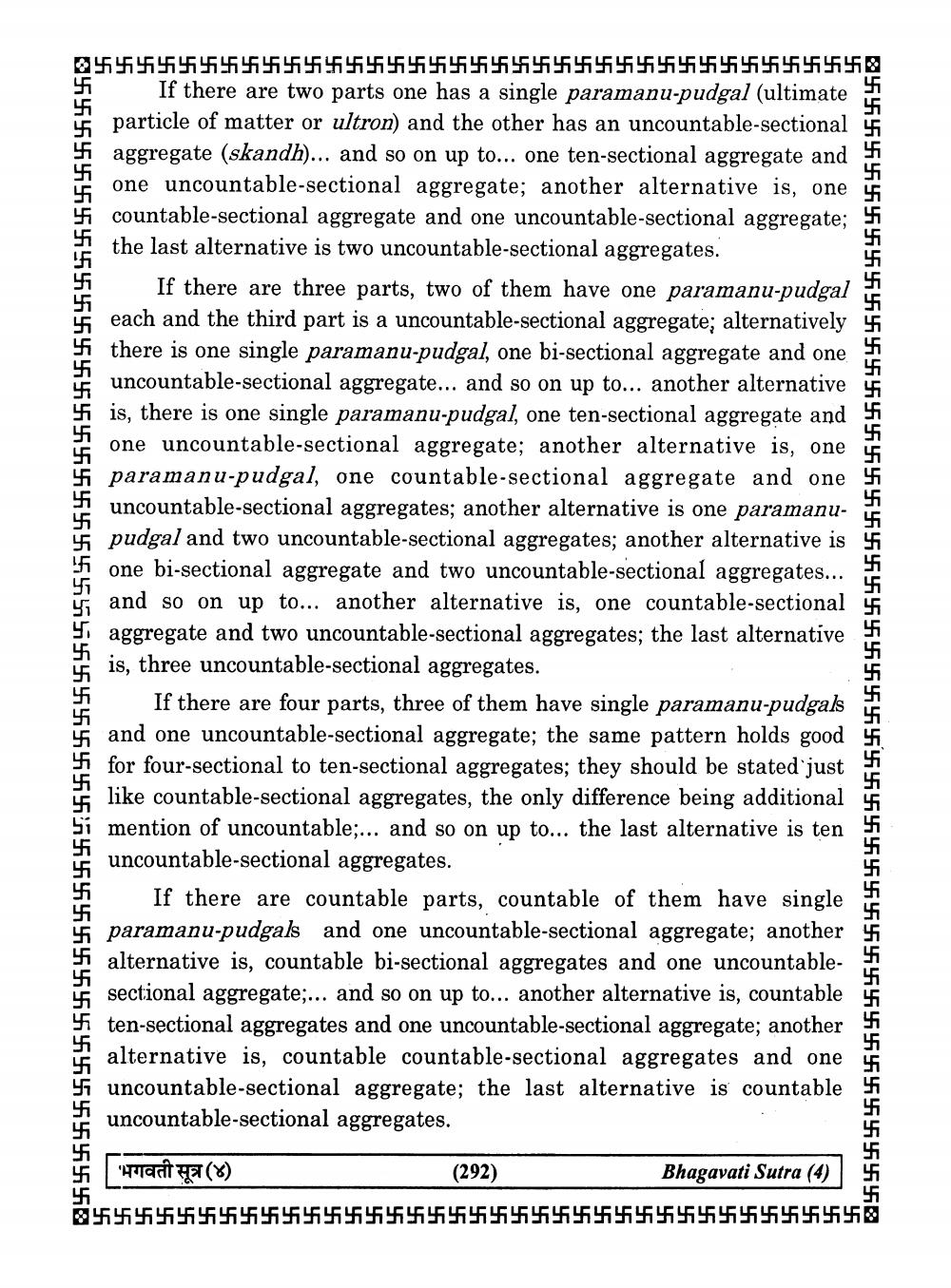________________
@441414141414141414141414141414141414141454141414141414141414141414141414
If there are two parts one has a single paramanu-pudgal (ultimate particle of matter or ultron) and the other has an uncountable-sectional aggregate (skandh)... and so on up to... one ten-sectional aggregate and one uncountable-sectional aggregate; another alternative is, one countable-sectional aggregate and one uncountable-sectional aggregate; the last alternative is two uncountable-sectional aggregates.
If there are three parts, two of them have one paramanu-pudgal each and the third part is a uncountable-sectional aggregate; alternatively there is one single paramanu-pudgal, one bi-sectional aggregate and one uncountable-sectional aggregate... and so on up to... another alternative is, there is one single paramanu-pudgal, one ten-sectional aggregate and one uncountable-sectional aggregate; another alternative is, one paramanu-pudgal, one countable-sectional aggregate and one uncountable-sectional aggregates; another alternative is one paramanupudgal and two uncountable-sectional aggregates; another alternative is one bi-sectional aggregate and two uncountable-sectional aggregates...
and so on up to... another alternative is, one countable-sectional y aggregate and two uncountable-sectional aggregates; the last alternative is, three uncountable-sectional aggregates.
If there are four parts, three of them have single paramanu-pudgals 45 and one uncountable-sectional aggregate; the same pattern holds good
for four-sectional to ten-sectional aggregates; they should be stated just like countable-sectional aggregates, the only difference being additional mention of uncountable;... and so on up to... the last alternative is ten uncountable-sectional aggregates.
If there are countable parts, countable of them have single paramanu-pudgals and one uncountable-sectional aggregate; another alternative is, countable bi-sectional aggregates and one uncountablesectional aggregate;... and so on up to... another alternative is, countable ten-sectional aggregates and one uncountable-sectional aggregate; another alternative is, countable countable-sectional aggregates and one uncountable-sectional aggregate; the last alternative is countable uncountable-sectional aggregates.
4414141414141414144145144444444444444444444444444444444444444444
tracts (8)
(292)
Bhagavati Sutra (4) 04141414141414141414141414141414141414141444444444444444449




